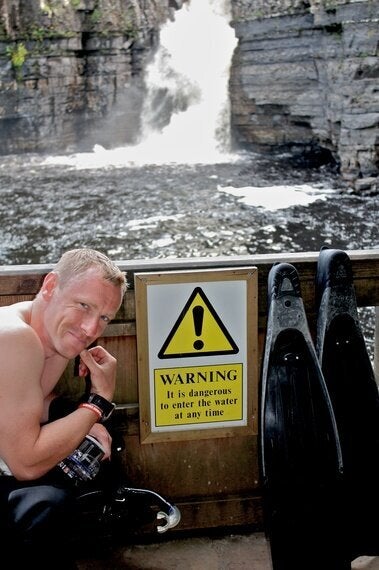So we've dealt with where to go and how to make yourself comfortable for the night. But one cannot operate on fresh air and a good night's kip alone, or not for very long at least.
So your first priority is water. Often overlooked and under-consumed on expeditions. I have found people are especially prone to dehydration in cold climates. In the desert heat everyone is very aware of the problem and is disciplined about drinking. But when you're cold it seems less pressing. Hydration is key to staying healthy on trips, short or long, everywhere in the world. But for the purposes of this blog we'll assume you're wild camping in the UK.
You have two choices: a) take it all with you - ok on short trips or if you're traveling by vehicle e.g. kayak or car, or b) collect along the way.
If you're taking it all with you, bear in mind a litre of water is 1kg. For cooking and drinking in 24 hours where you're working hard in the day you could be looking at 5kg. Personally, with the state of my knees and back, I don't want to carry any more weight than necessary. If you are traveling by some form of vehicle then you can carry the weight dependent on the vehicle i.e. I'd happily carry more in a kayak vs a bike and a car vs a kayak. I use water storage bags a lot as their flexibility allows me to cram them into awkward spaces (e.g. behind the seat of my kayak) and they also diminish in size as you use up the water unlike a hard case bottle. You can even get fittings for them to turn them into showers and if you select a black one, as black absorbs the heat from the sun well, leave it out all day and you'll have a hot shower... although this may not work so regularly in Britain.
But since we're assuming you're UK based for this trip I have some good news. It rains a hell of a lot here so water is seldom a scarce commodity. This means you can collect on the way.
The first thing to bear in mind is the best place to store water is in your stomach so if you find a good source drink your fill before filling up whatever carrier you have. This means you'll leave your water source fully hydrated. I would also say fill up whenever you get the chance rather than waiting until your water bottle has run dry then trying to find a refill spot.

When your deciding how much water to carry it's a compromise between how much you'll need (affected by how hard you're working and the environmental conditions), how much weight you're happy to carry and how far it is between likely refill spots. You may decide to carry nothing if you're walking through streams every 10 minutes or three litre bag if you know you'll see nothing all day. You can also consider your destination. If I know that when I finish I can fill myself with fluid I'm happier accepting a certain level of dehydration through the day and carrying less water. Personally I'd recommend between one and three litres depending on the length of day, weather and number of potential water-stops. I like to carry at least one of my water containers easy to hand with a drinking tube, like the Camelbak type. If you have to stop, take your pack off and get a bottle out for a drink the chances are you won't bother. The easier you make it for yourself the more likely you are to drink. And hydration is key.
So you've decided how much to carry and where to carry it. Now you need to make sure it is safe to drink and I'll deal with water purification next week.